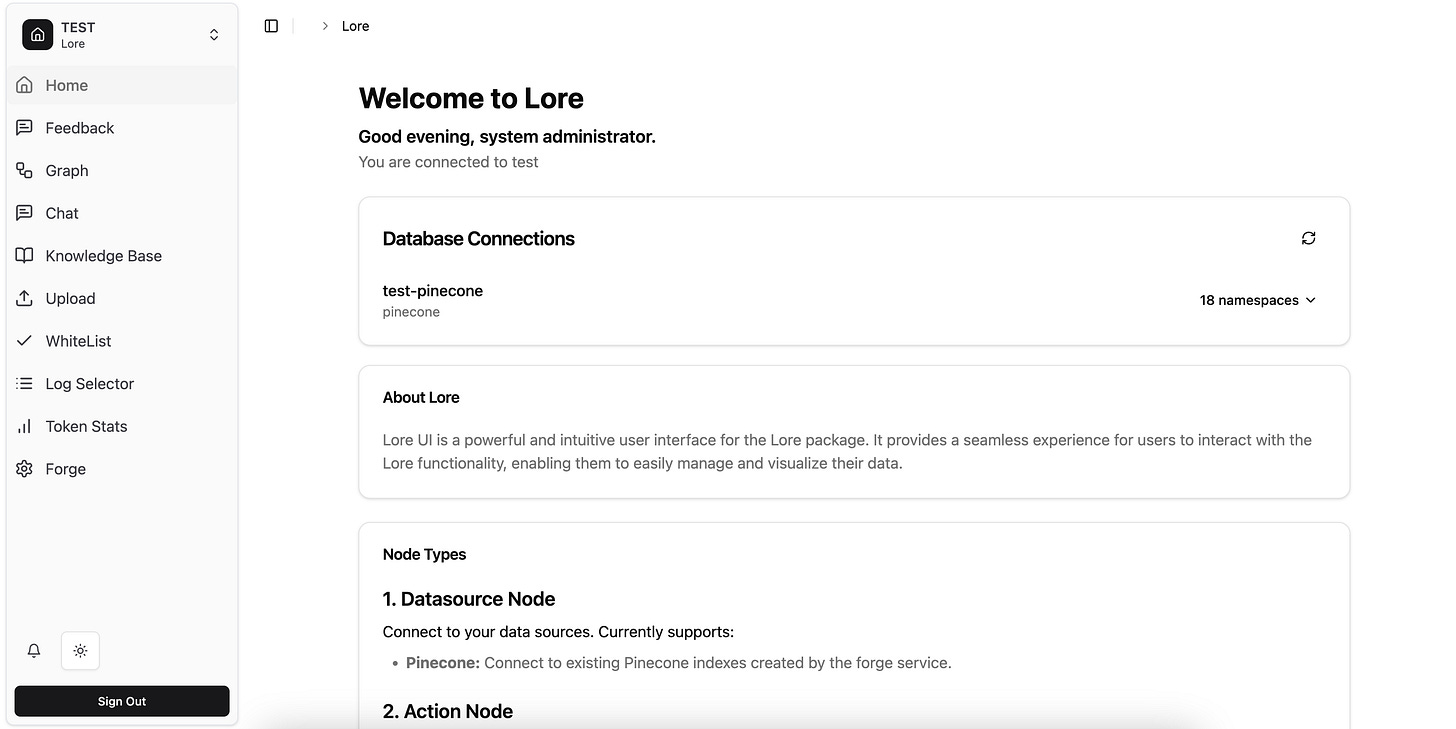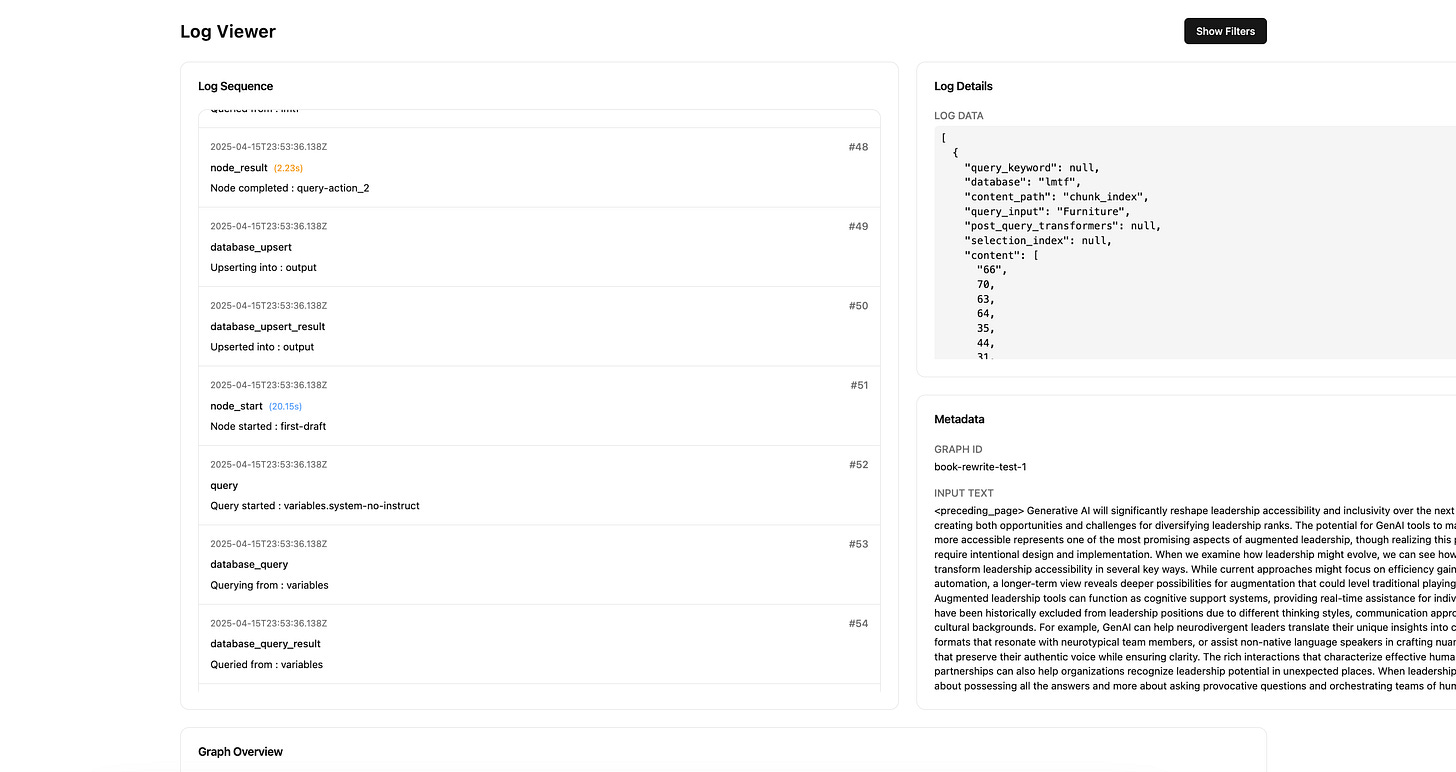Not just infinite books, but books that are infinite.
In a world of AI, you should never send your client a PowerPoint or a PDF ever again
(A quick plug before we dive in — if you want to learn more about how to make your ideas infinitely interactive, join our free lightning lesson on Thursday April 17th at 10am PST).
Automating Craft
When Jorge Luis Borges imagined his 'Library of Babel' containing every possible book, it turns out he wasn't pushing the boundaries far enough. AI gives us the ability to make something even more powerful: not just infinite books, but books that are infinite. Books that rewrite themselves based on the reader's needs and interests.
Plato's dialogues weren't static texts — they were conversations that unfolded organically, with each question leading to new insights. Modern documents, by contrast, sit inert. You send your client a report, they read it, end of story. Generative AI is giving us a chance to make information alive again.
The document you just spent weeks perfecting is already obsolete—not because the information is wrong, but because it's trapped in amber. What if instead your ideas could breathe, evolve, and respond to questions you never anticipated when you hit 'send'?
Crossing the “Valley of Boring”
As enticing as this sounds, it often seems like what comes out of LLMs is just slop. Most of us have tried those "upload your PDF" tools by now. You create a custom GPT or whatever, upload your materials, and start asking questions.
And it almost works, right?
The information is there, but something's off. The language doesn't quite capture your voice. Details are sometimes incorrect. And the moment you ask the AI to generate new ideas rather than answer questions, things really fall apart.
However, the issue isn’t actually with the capabilities of the models themselves, but with the approach to using them.
Many people imagine language models as giant sponges that absorb documents and magically understand them. This isn't how they work at all.
What actually happens is much more technical: systems retrieve specific chunks of documents according to certain rules, and by controlling how these chunks are injected and processed, you gain tremendous control over both style and substance.
Endlessly Unfolding Knowledge
Here's my central argument: if you're using AI just to create a single report or a single PowerPoint, except maybe a little faster, maybe a little more original, you're missing the bigger opportunity.
The real game-changer is creating knowledge assets that are dynamic, interactive, and infinitely extensible.
Why write a book and not provide the option to generate new chapters based on a reader's interests?
Why deliver a client report which doesn’t have the capacity to expand to address new questions as they arise?
Knowledge should be explorable. It should come to life. It should come to you rather than you having to seek it out.
This idea has deep historical precedents. Throughout human history, cultures have found ways to make static texts come alive through interpretation and expansion. Think of how religious traditions have expanded sacred texts through commentary, or how legal systems build case law upon foundational documents. What's new is our ability to systematize and accelerate this process.
Sequences, Flows, and Loops of Ideas
The last 10% matters. Generic content about project management or digital transformation is everywhere. What sets truly valuable generative content apart is that final polish that makes it uniquely yours.
So how do we get past that "Valley of Death" where most AI endeavors falter, where your AI app is 70% there but not quite delivering the compelling insights you need?
The answer lies in creating sophisticated sequences, flows, and (sometimes) loops that guide the AI through your knowledge in a structured way.
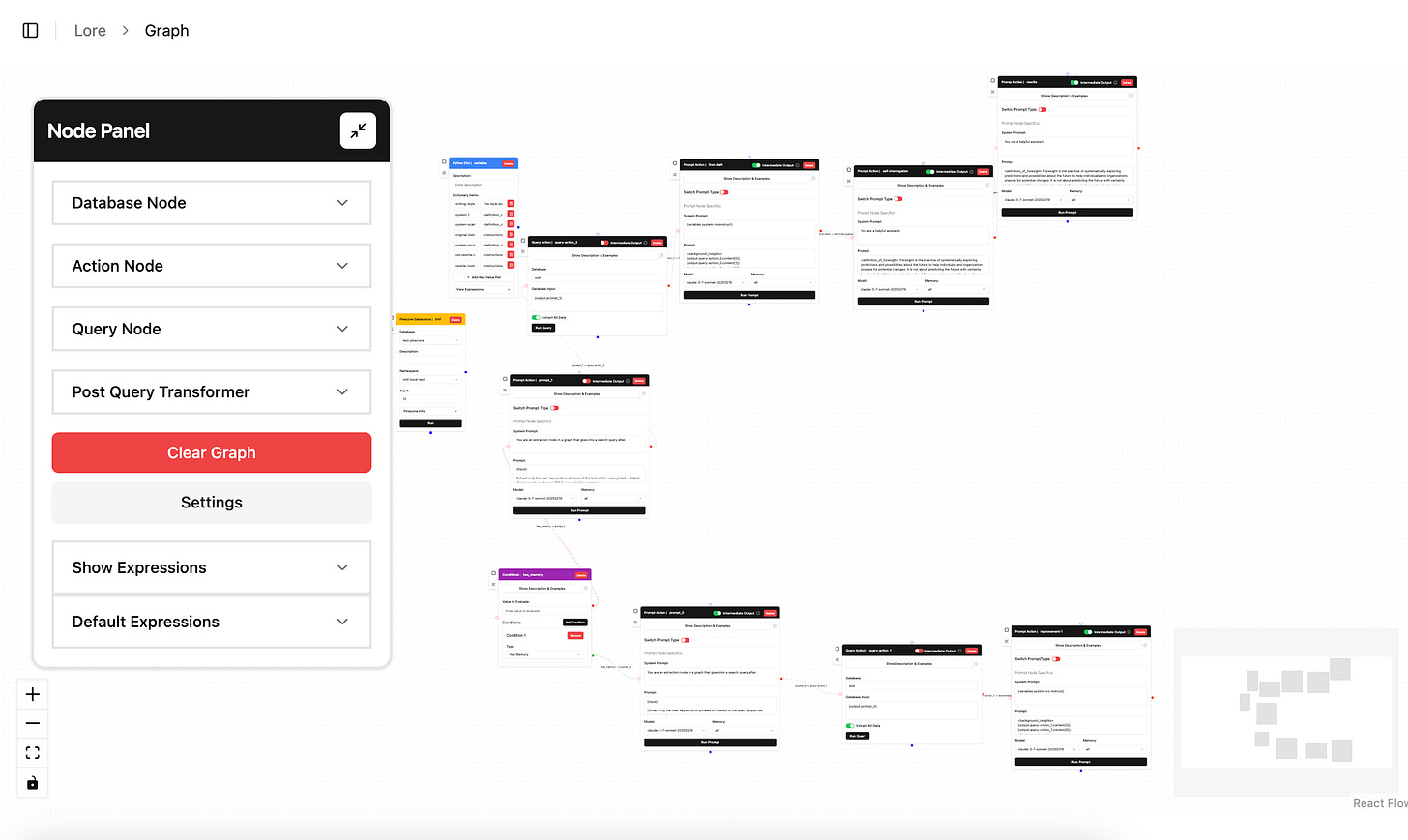
This graph-based approach is at the heart of what makes advanced AI implementations work. Rather than a simple Q&A system, we're building a structured representation of knowledge as interconnected nodes with precise relationships between concepts. This preserves the context and subtle connections in your knowledge domains that might otherwise be lost.
Think of the language model as an engine, and the implementation framework as the chassis built around it. Just as you can take an engine and create a car, train, or tractor depending on the surrounding structure, the same language model can serve radically different purposes based on how you orchestrate its capabilities.
We're big fans of "vibe coding" here, but implementation methods vary. Some open-source options like Chain Forge or Rivet exist, but ultimately we decided to create our own system called Lore.
Lore provides a visual interface where you can create different types of nodes representing AI functions, data sources, and transformations. You then connect these nodes to define exactly how your expertise should be processed and delivered. This includes datasource nodes that connect to your stored knowledge, action nodes that define AI operations, query nodes for how data is accessed, and transformation nodes that process information in specialized ways.
Why build such a system? We needed a way to orchestrate information from diverse sources — client frameworks, web data, specialized datasets — and weave it together elegantly with prompts that bring the content to life exactly as expected.
Let me give you a concrete example. We’re creating an "infinite book" based on our recently published “Leaders Make the Future, Third Edition: 10 New Skills to Humanize Leadership with Generative AI” that we wrote with Institute for the Future colleagues Bob Johansen and Gabe Cervantes.
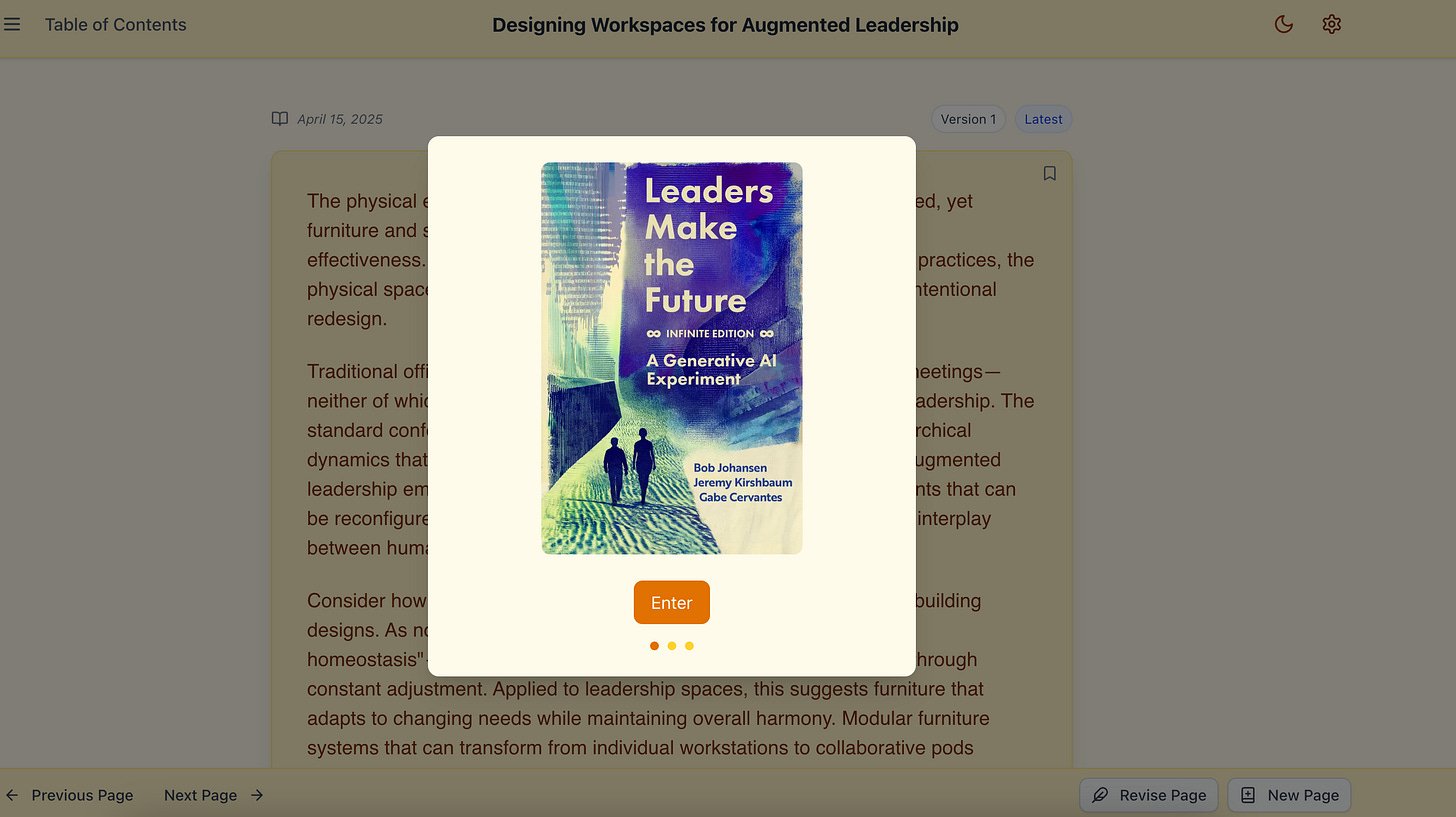
We wanted to transform a static text into a living, dynamic resource. Simply uploading the original book to a chatbot yielded generic responses that missed the nuance and philosophical approach of the original.
We needed content that was both:
Consistent with the book's style and approach
Novel and able to generate new ideas which resonated with user’s interests
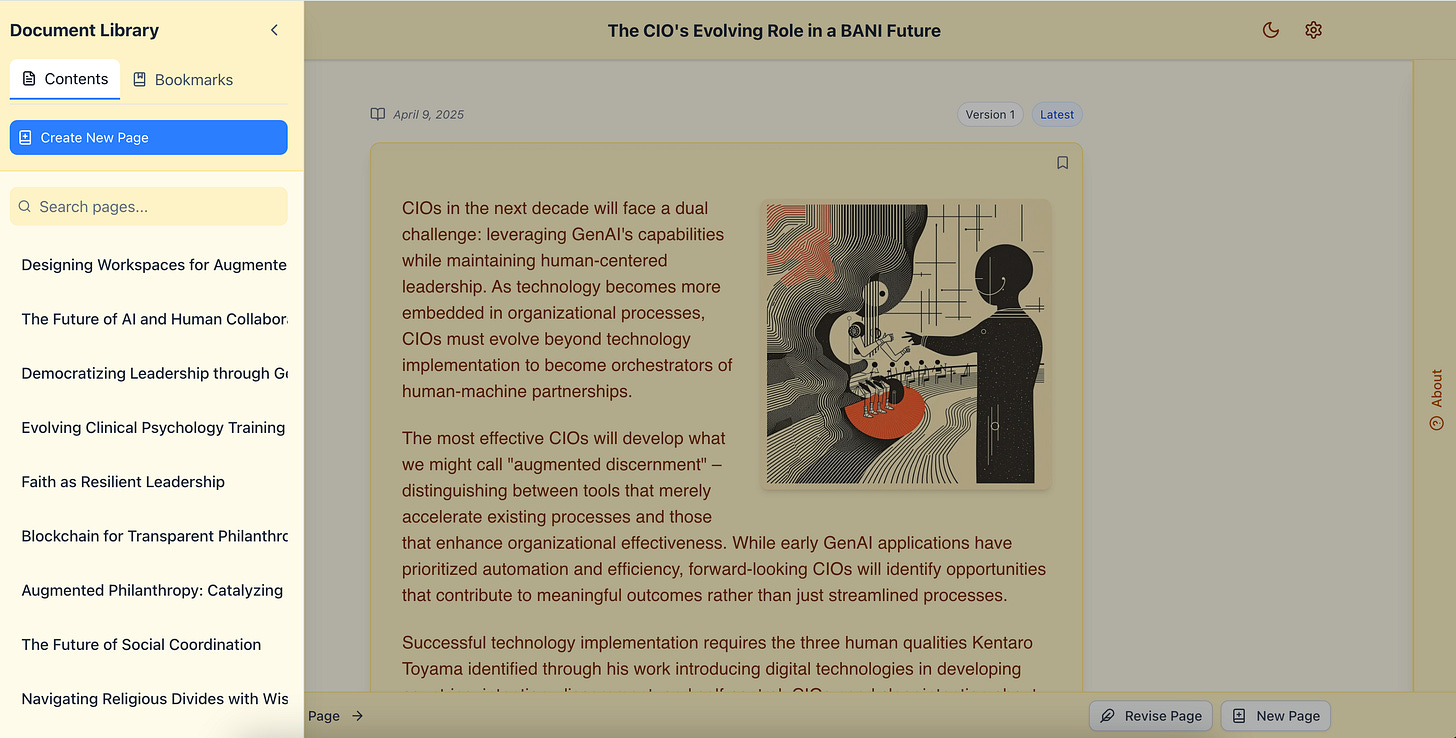
What makes this approach powerful is that it enables collective exploration and development of ideas. Unlike traditional chatbot interactions, which are primarily one-on-one experiences, these systems can facilitate networked content generation where each new contribution builds upon what came before.
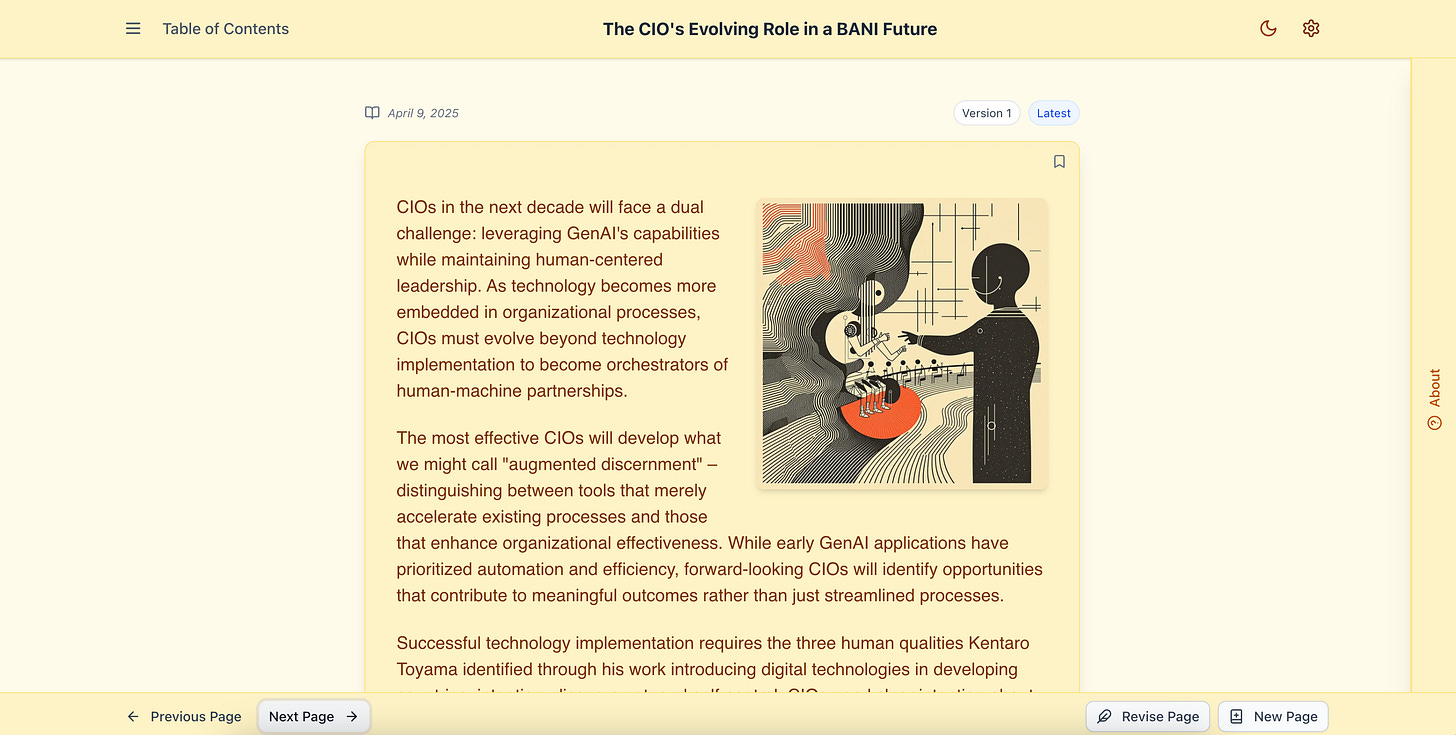
Truth becomes a process rather than a set of statements. A static forecast or strategy document transforms into an evolving ecosystem of ideas that can be expanded in countless directions while maintaining internal consistency.
Leaders Make the Future: Infinite Edition is still isn’t quite open for public consumption, but if you want an early peek, reach out and let us know ;)
Language User Experience Matters
This approach is sometimes called LUX (Language User Experience) or LUI (Language User Interface) - effectively, the UX of the AI’s words. Since our generative system communicates through text, the way it speaks is the user experience. This element is critically important because different organizations have vastly different definitions of what makes content "good."
What works for a multi-national church differs dramatically from what works for a charity accreditation agency or a non-profit tourism advocacy group. Each deserves tools that create amazing ideas according to their own standards.
Have you noticed that creating high-quality AI-generated content requires significant iteration? That's telling us something important.
If you can create excellent output manually, with human-in-the-loop adjustments, then there's a repeatable process waiting to be systematized.
Elite Knowledge Work in the AI Age
For those of us providing high-level boutique consulting to elite or specialized groups, our value has always come from speaking our clients' language and deeply understanding their unique challenges.
We develop reliable methods for expanding on their needs through workshops, documentation, and learning materials.
That's why structured approaches to knowledge have been so valuable. They give us control, traceability, and the ability to build what I call "infinite idea machines" — PowerPoints that adapt to client needs, reports that grow organically, and books that continue beyond their original scope.
These aren't just document generators but can evolve into interactive advisors that embody methodologies, knowledge bases that respond to complex queries, and specialized research tools that combine retrieval and generative capabilities.
Many are working on using language models to provide answers, but what they're better suited for is generating new ideas. The goal extends beyond accurate responses to developing innovative concepts — particularly in domains like strategic foresight, where creating new possibilities is the entire point.
This approach also aligns with organizational realities. The people who best understand your ideas and can articulate them well aren't usually the same people managing your website or building software.
Visual interfaces allow strategists and authors to control the language directly, deploying on infrastructure without getting bogged down in technical complexity. The experience is designed to push expectations from generative tools, to make it feel like consulting with your organization's experts, preserving the depth and subtlety of your approach while making it available at scale.
What's your next knowledge asset that could benefit from becoming infinite? I'd love to hear about your experiences with AI-generated content and what challenges you've faced getting to that crucial last 10%.
One more reminder — if you want to learn more about how to make your ideas infinitely interactive, join our free lightning lesson on Thursday April 17th, or reach out to us any time if you want to chat more.




